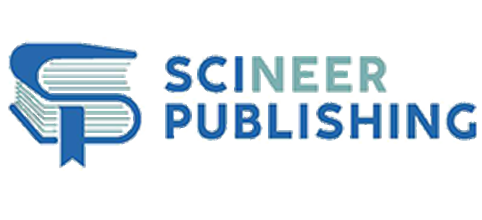Teaching Reform of CNC Programming Courses under Industry-Education Integration
Abstract
Keywords
Full Text:
PDFReferences
[1] Zhou, H. (2023). Integration of mechanical automation and CNC technology. Paper Making Equipment and Materials, 52(10), 76-78.
[2] Li, B., Jia, F.L., & Niu, Y.H. (2023). Innovative models of industry-education integration for mechanical engineering talent. International Journal of New Developments in Education, 5(25).
[3] Xie, J.T., Shen, X.B., & Liu, X. (2022). Building integrated intelligent manufacturing training bases: The case of Tianjin Institute of Industry. Journal of Tianjin Vocational Institutes, 24(8), 15-18+25.
[4] Yue, Z.L., & Zhao, H. (2023). Practical teaching model for UAV application technology under industry-education integration. Science and Technology Wind(34), 49-51.
[5] Zhao, H.J., & Wang, C.S. (2023). Teaching reform of polymer physics under the first-class major initiative: A case study of Yancheng Institute of Technology. Huazhang(5), 18-20.
[6] Li, G.L. (2023). Exploration and practice of industry-education integration in local applied undergraduate majors. Industry and Science Tribune, 22(6), 185-187.
[7] Li, F.X., Huang, Y., Tian, H., et al. (2021). Teaching effectiveness of CNC Machine Tool Programming and Operation. China Equipment Engineering(10), 233-234.
[8] Feng, L.H. (2020). Teaching reform of CNC turning machining technology using Yulong simulation. Southern Agricultural Machinery, 51(10), 84.
[9] Yin, G.B., & Peng, J.Y. (2020). Cultivating CNC craftsmen through industry-education integration. Science and Technology Wind(18), 284.
[10] Xu, L.Y., Ye, G.-S., Feng, S.C., et al. (2023). Exploration and practice of project-based teaching in secondary vocational courses: The case of Programming and Operation of Multi-axis CNC Machine Tools. Journal of Guangdong University of Technology and Education, 44(6), 48-54.
[11] Yang, R.Q., Lv, J.Y., & Liu, Y. (2021). Blended teaching reform in the course CNC Machine Tool Programming and Operation. Equipment Manufacturing Technology(1), 103-105.
[12] Li, Y.N. (2021). Blended teaching model using Yuclass: The case of CNC Machine Tool Programming and Operation. Journal of Distance Education in Science and Engineering(1), 39-43.
[13] Tian, Z.X., Gao, F.X., & Wang, L.J. (2022). Teaching reform of Mechanical Drawing and Mapping in teaching ability competitions. Modern Manufacturing Technology and Equipment, 58(10), 220-224.
[14] Zhang, N.Y., & Hou, Y. (2022). Integrating ideological and political elements into CNC Programming courses. Times Automobile(24), 34-36.
[15] Li, Y.N. (2022). Practice of integrating ideological and political education into the course CNC Machine Tool Programming and Operation. Journal of Liaoning Radio & TV University(1), 21-24.
DOI: http://dx.doi.org/10.70711/cle.v2i6.6923
Refbacks
- There are currently no refbacks.

